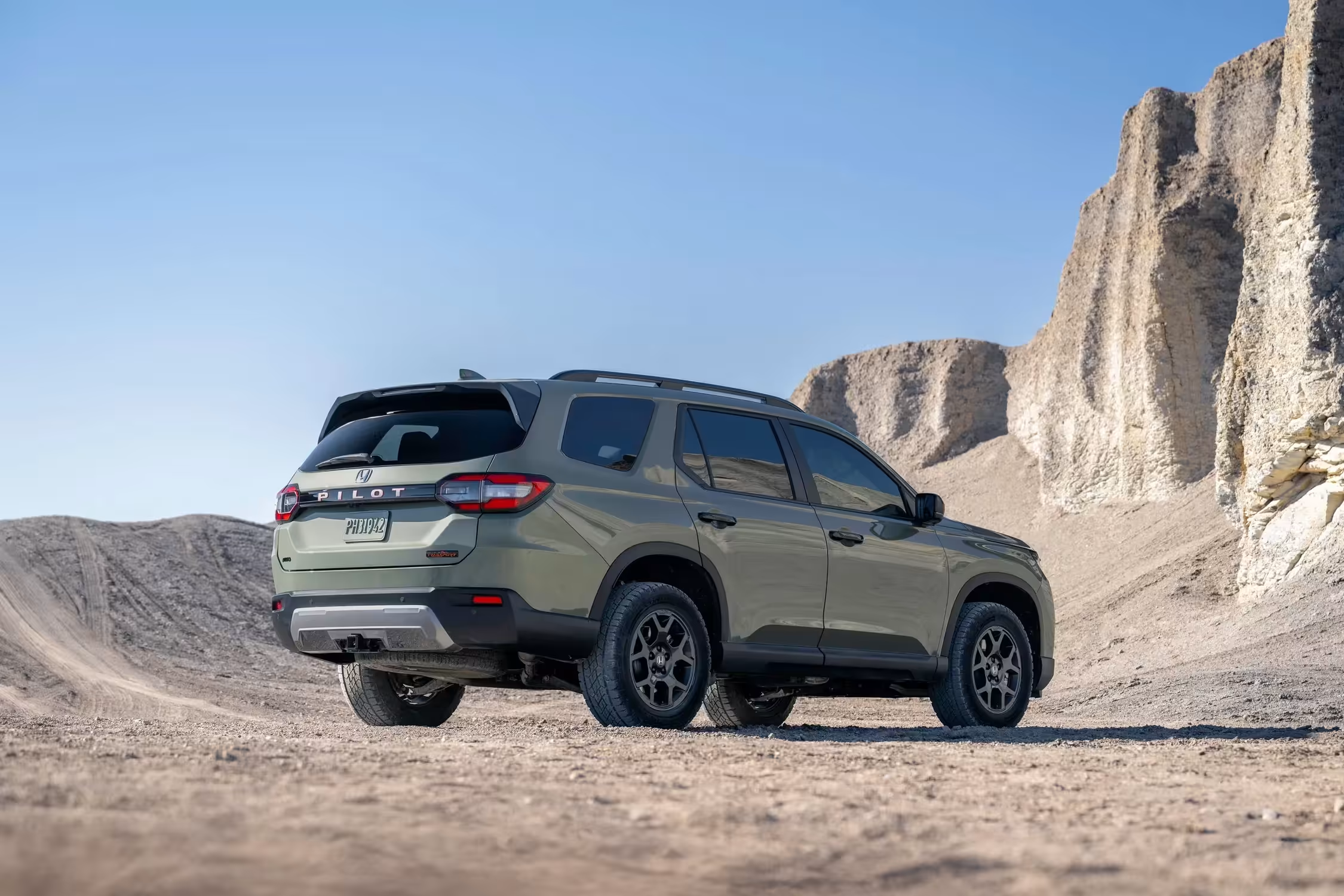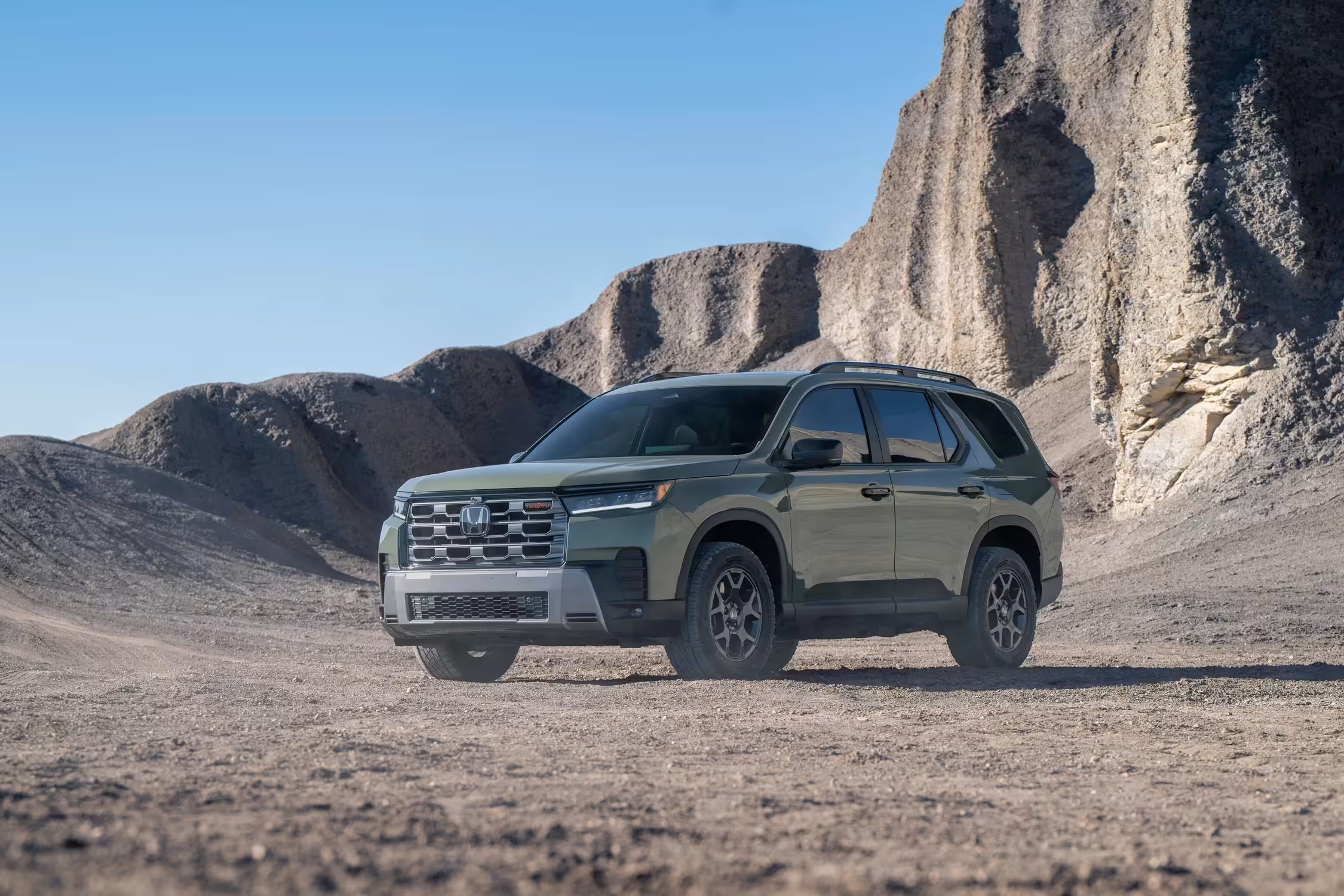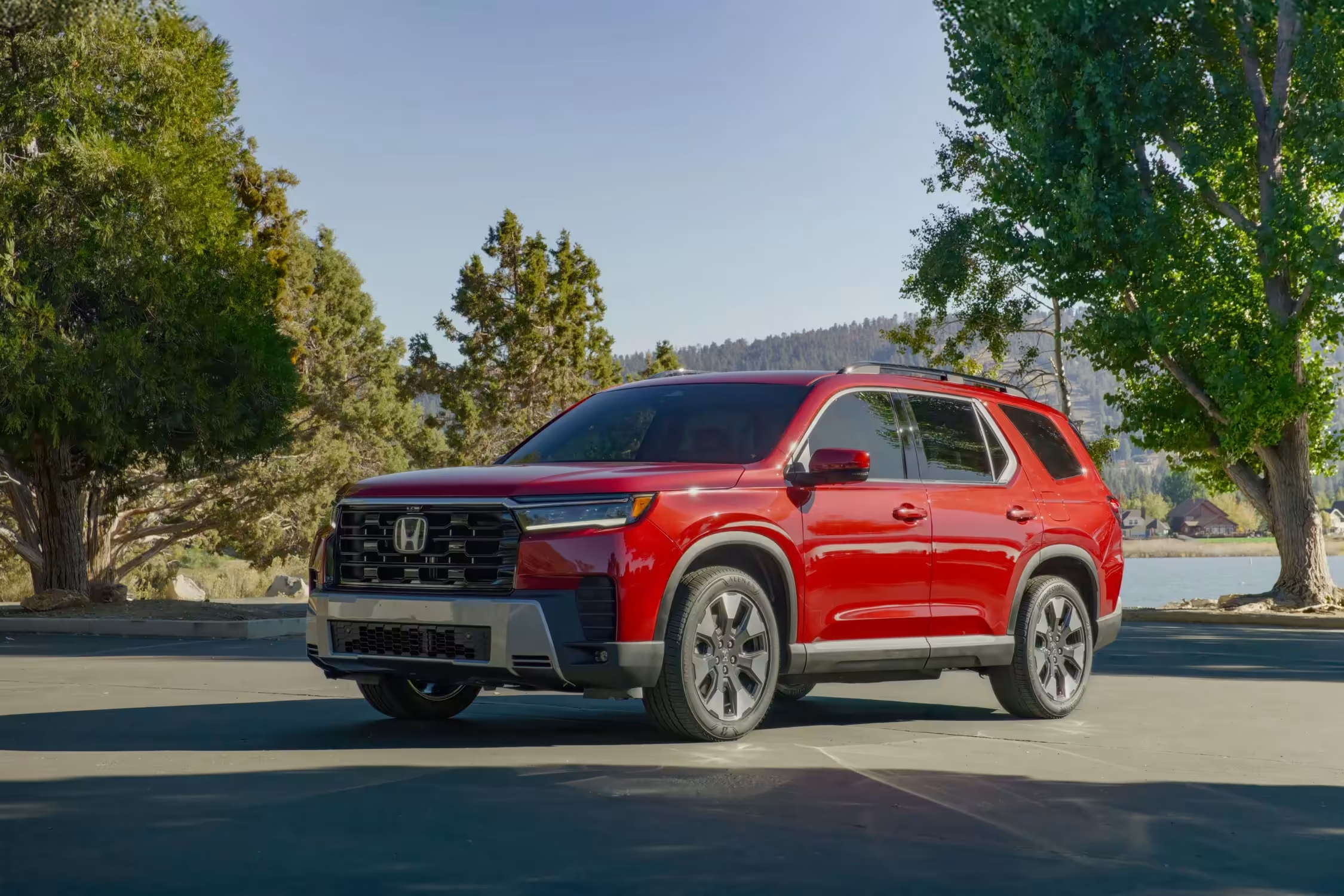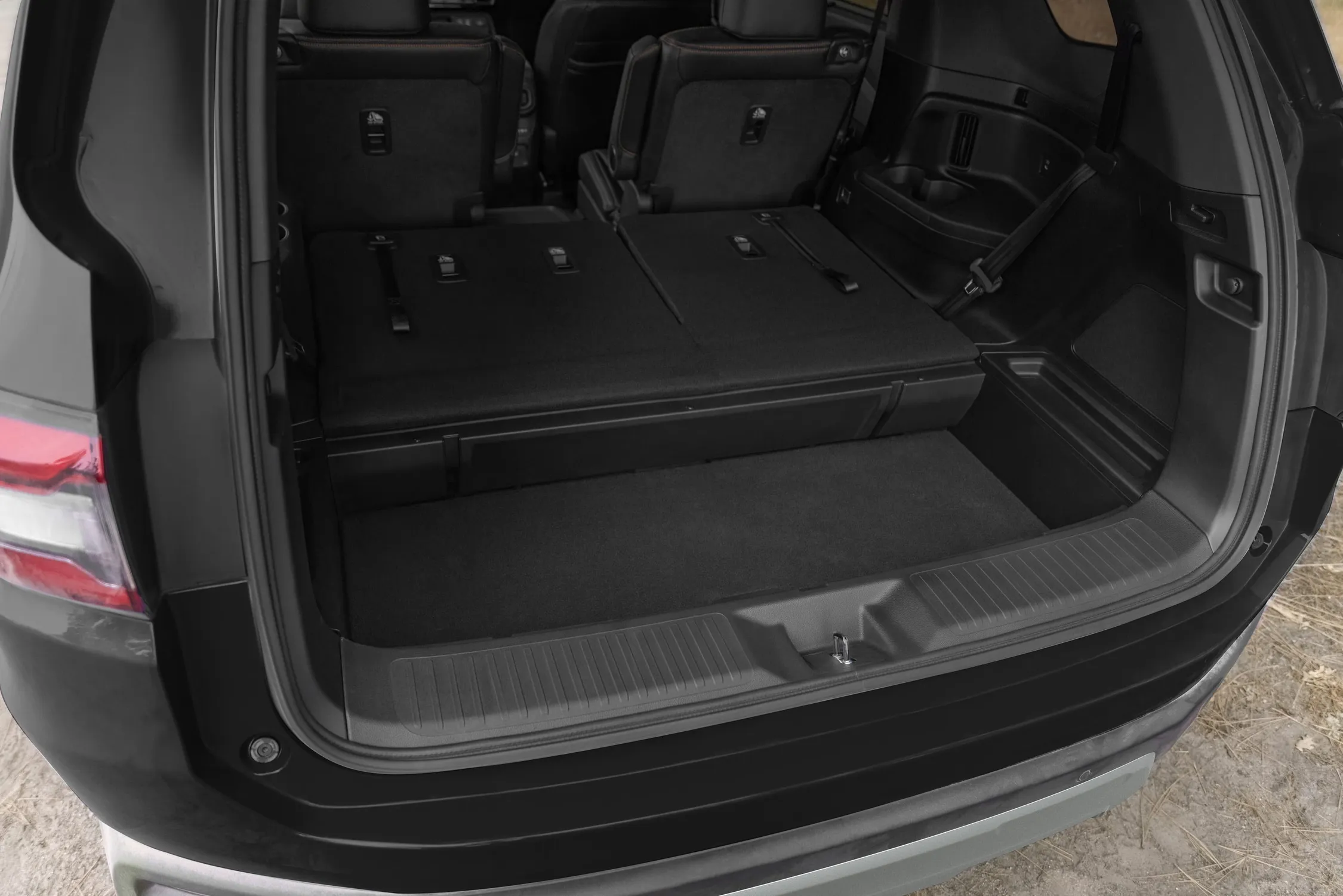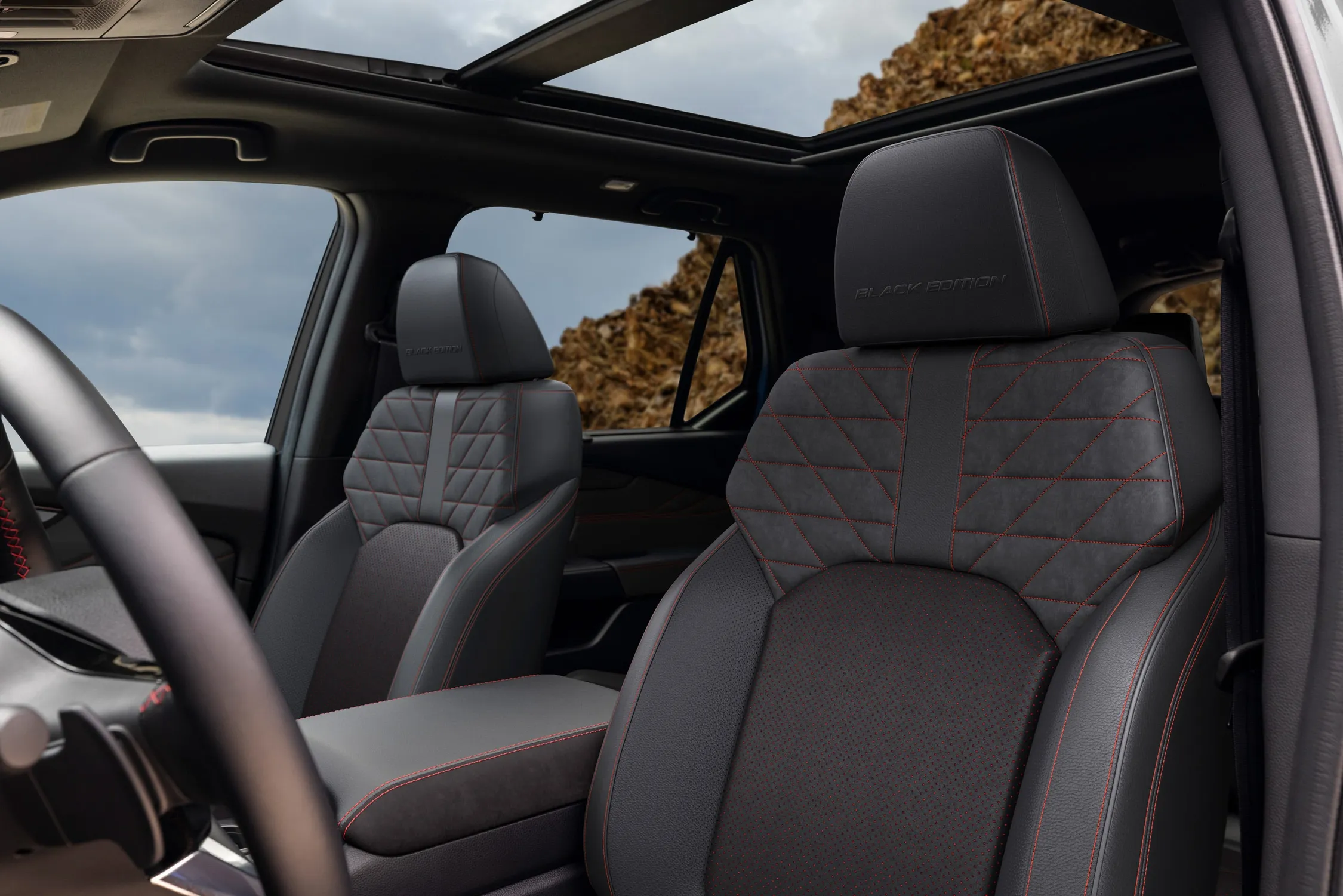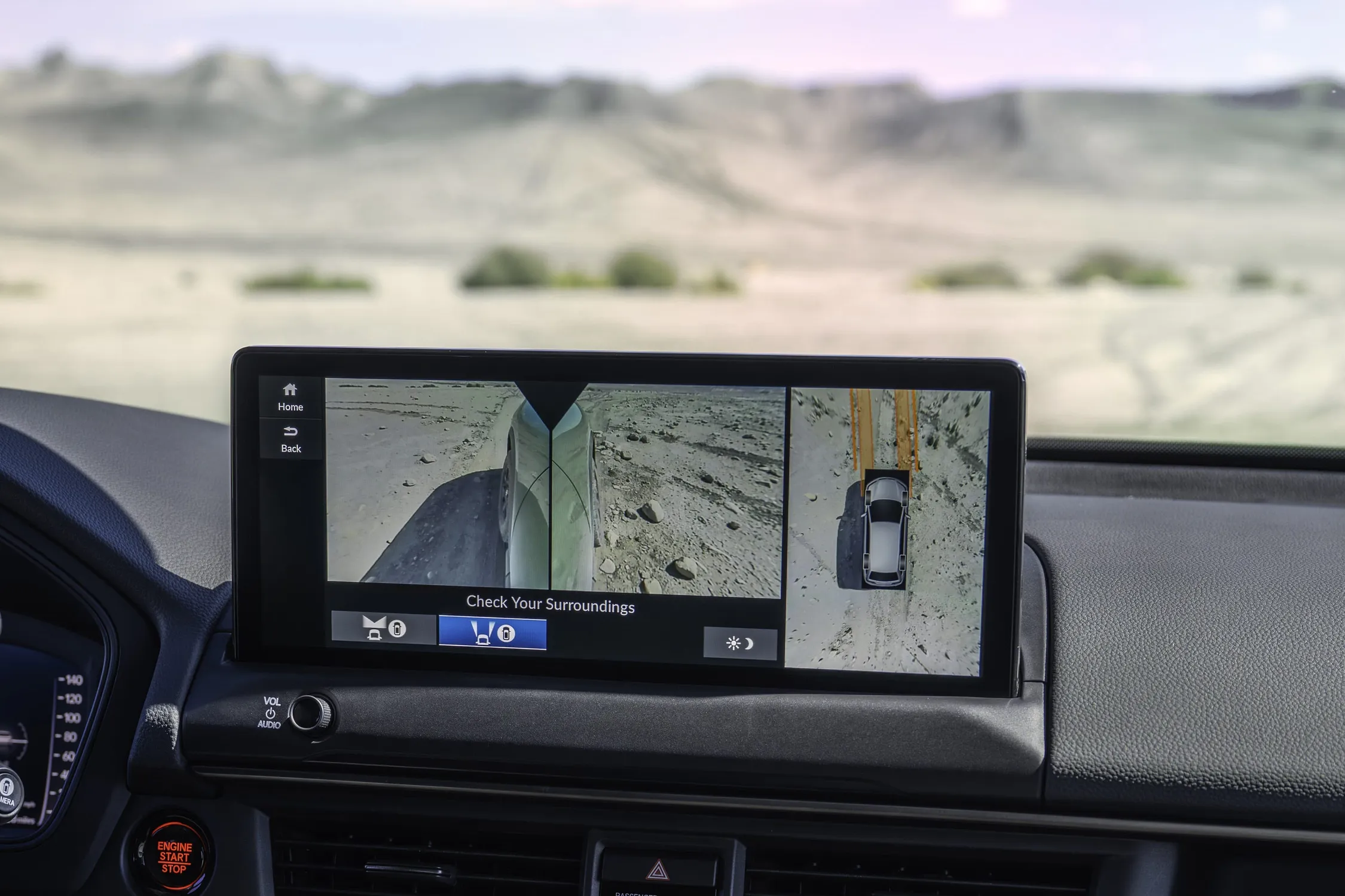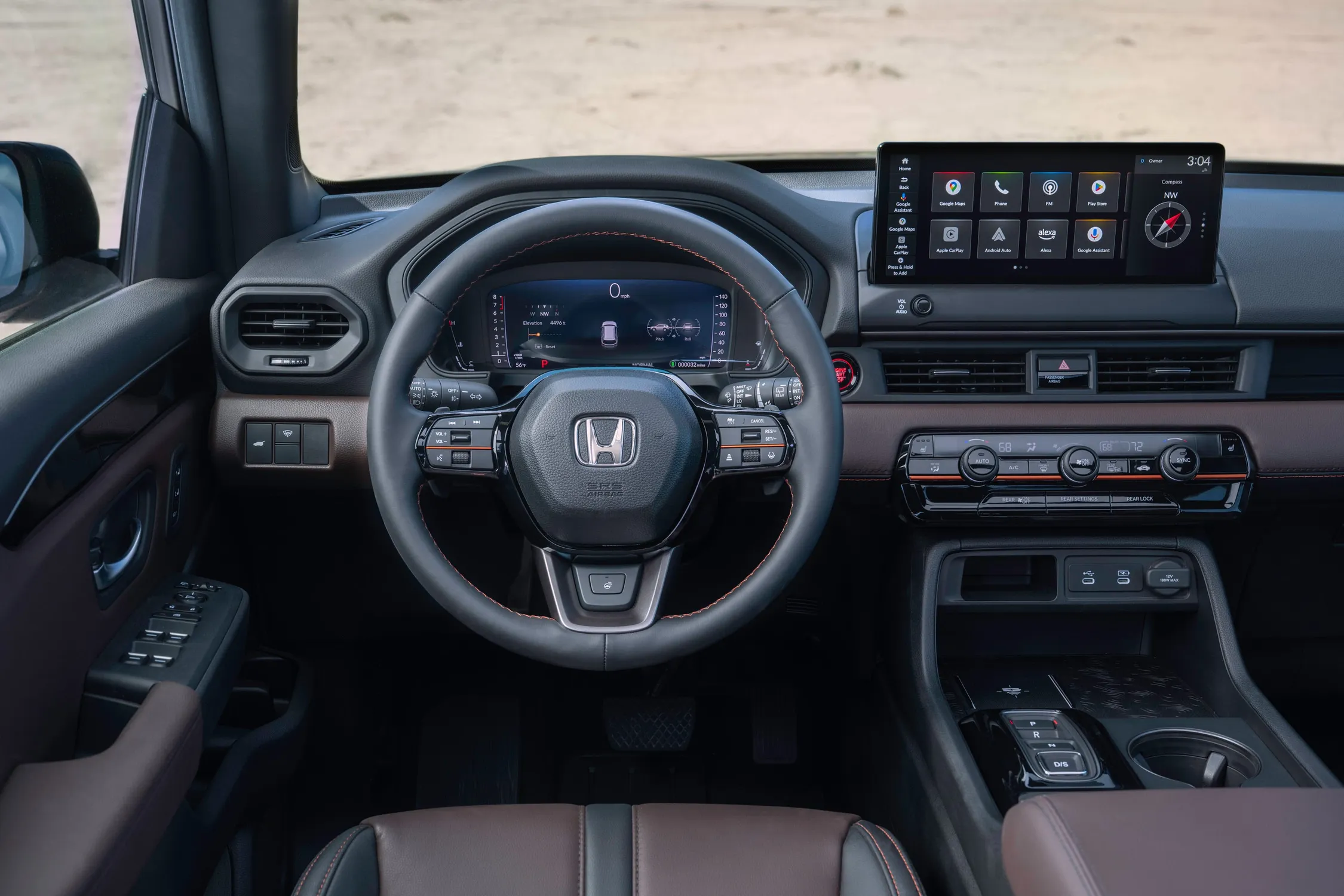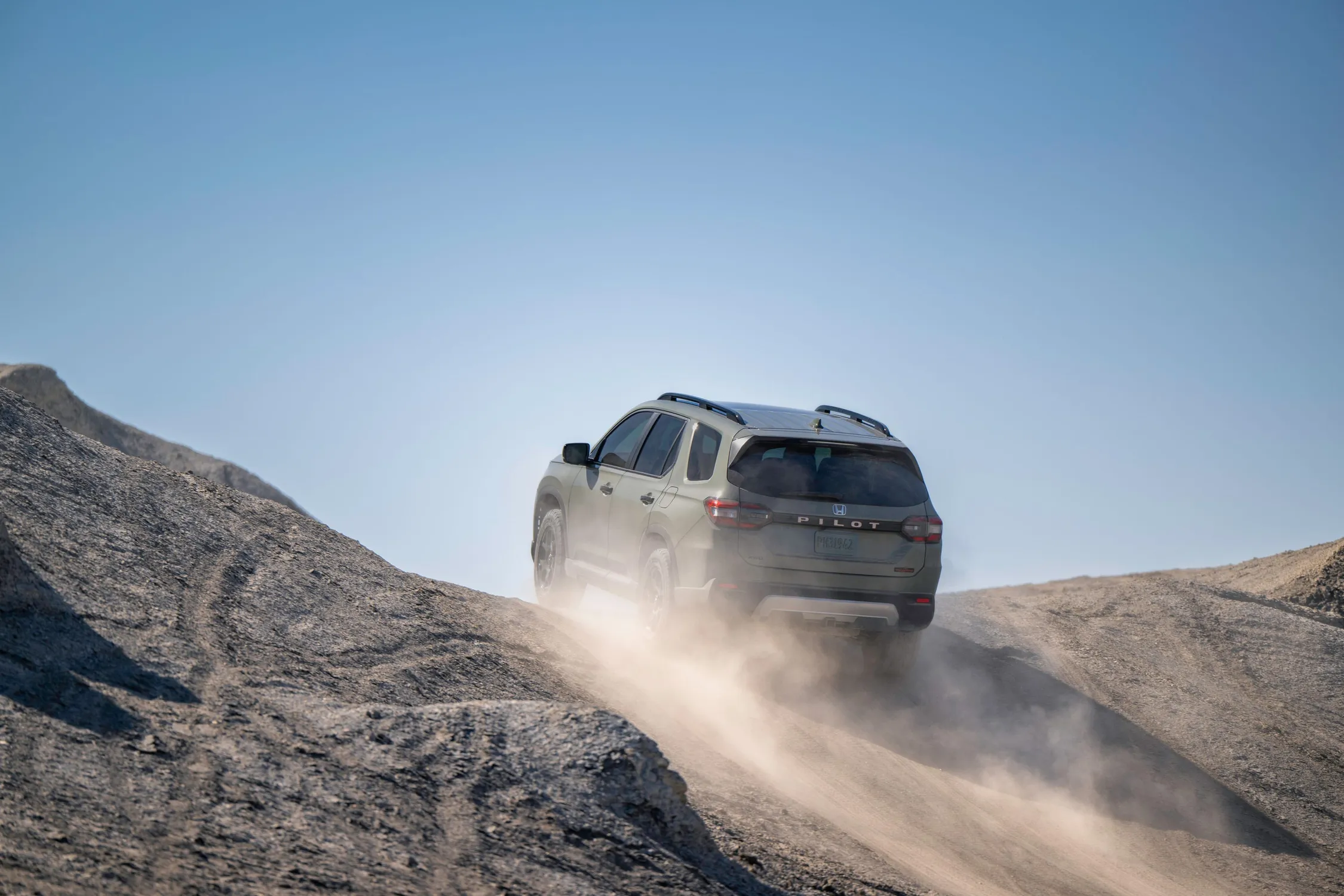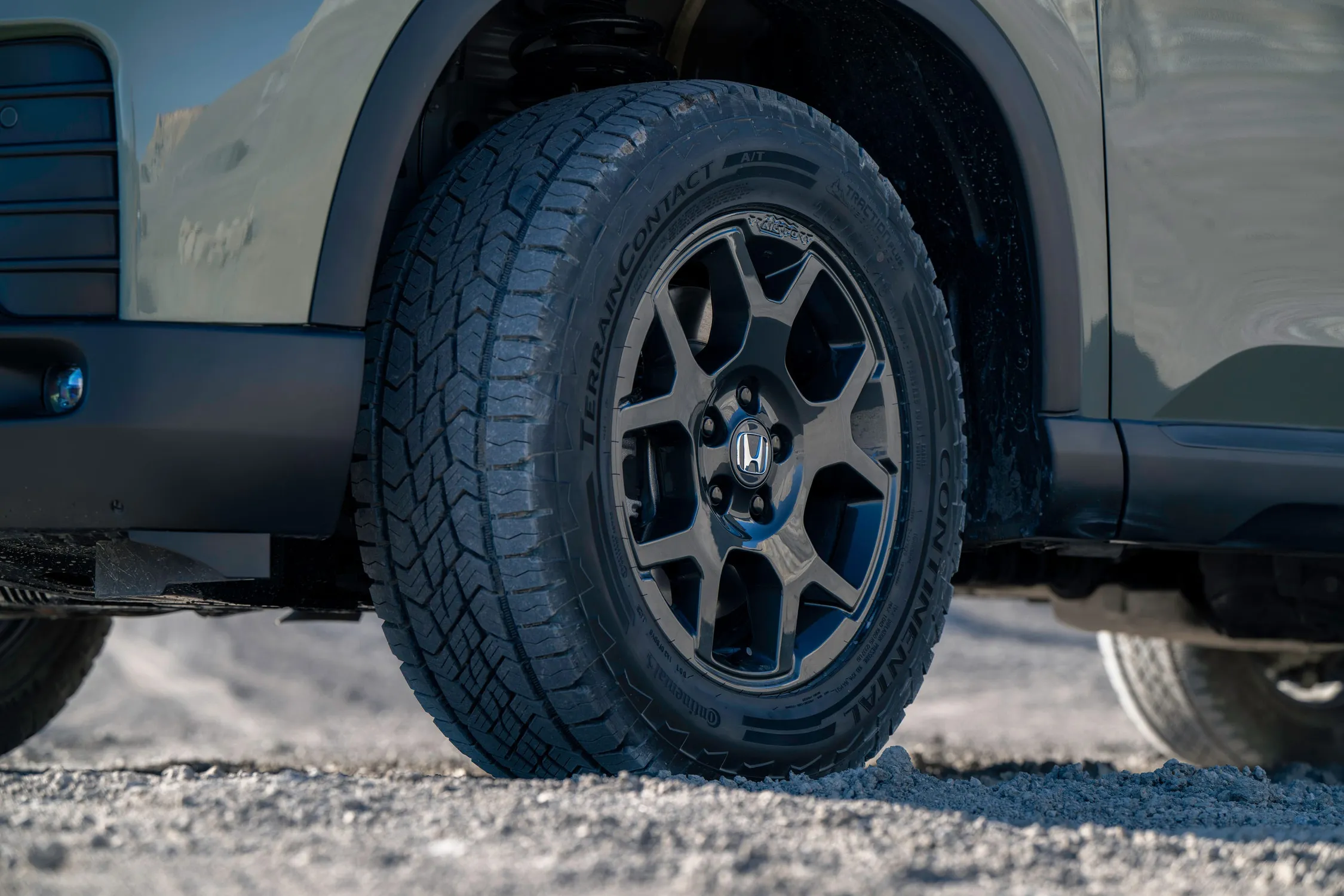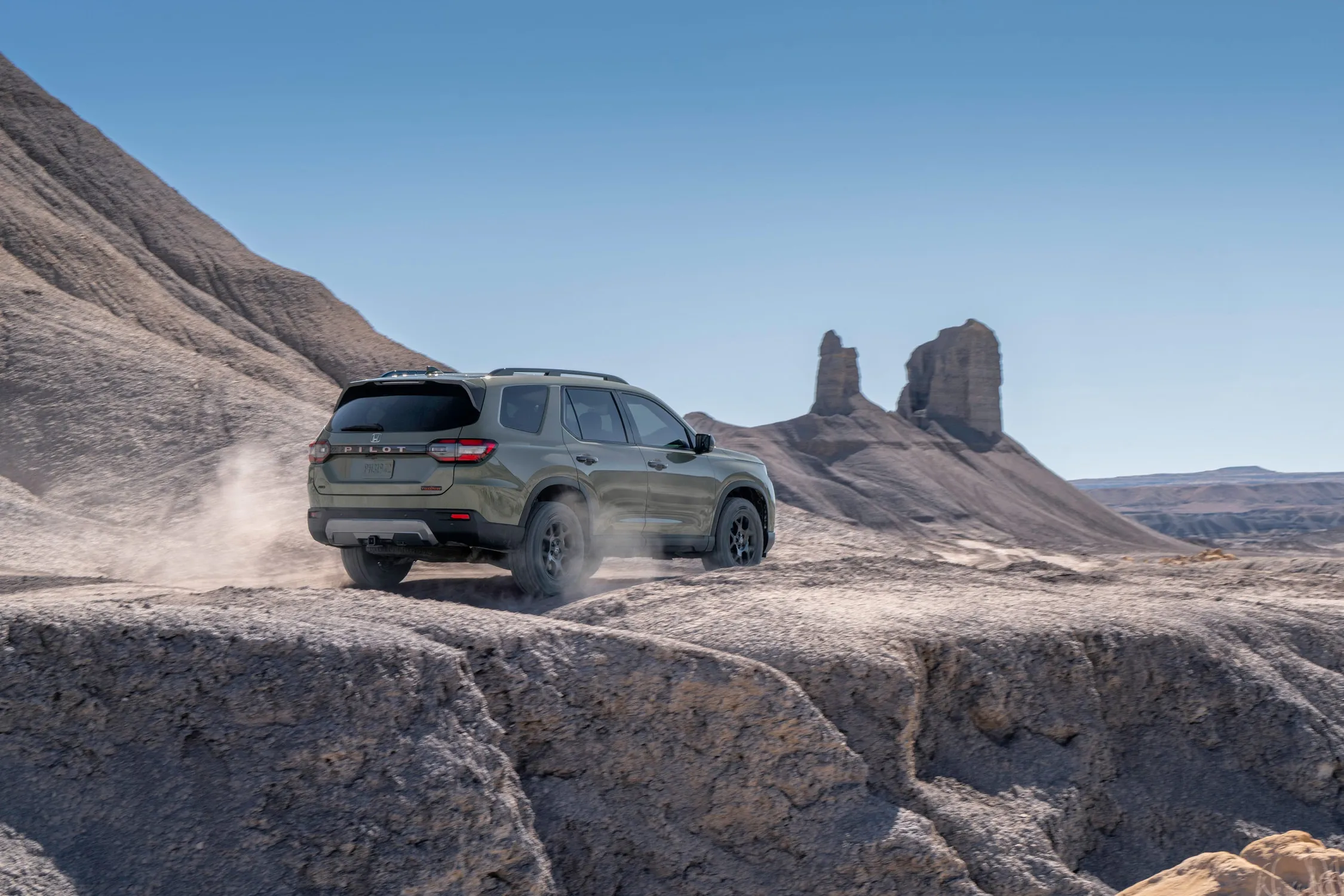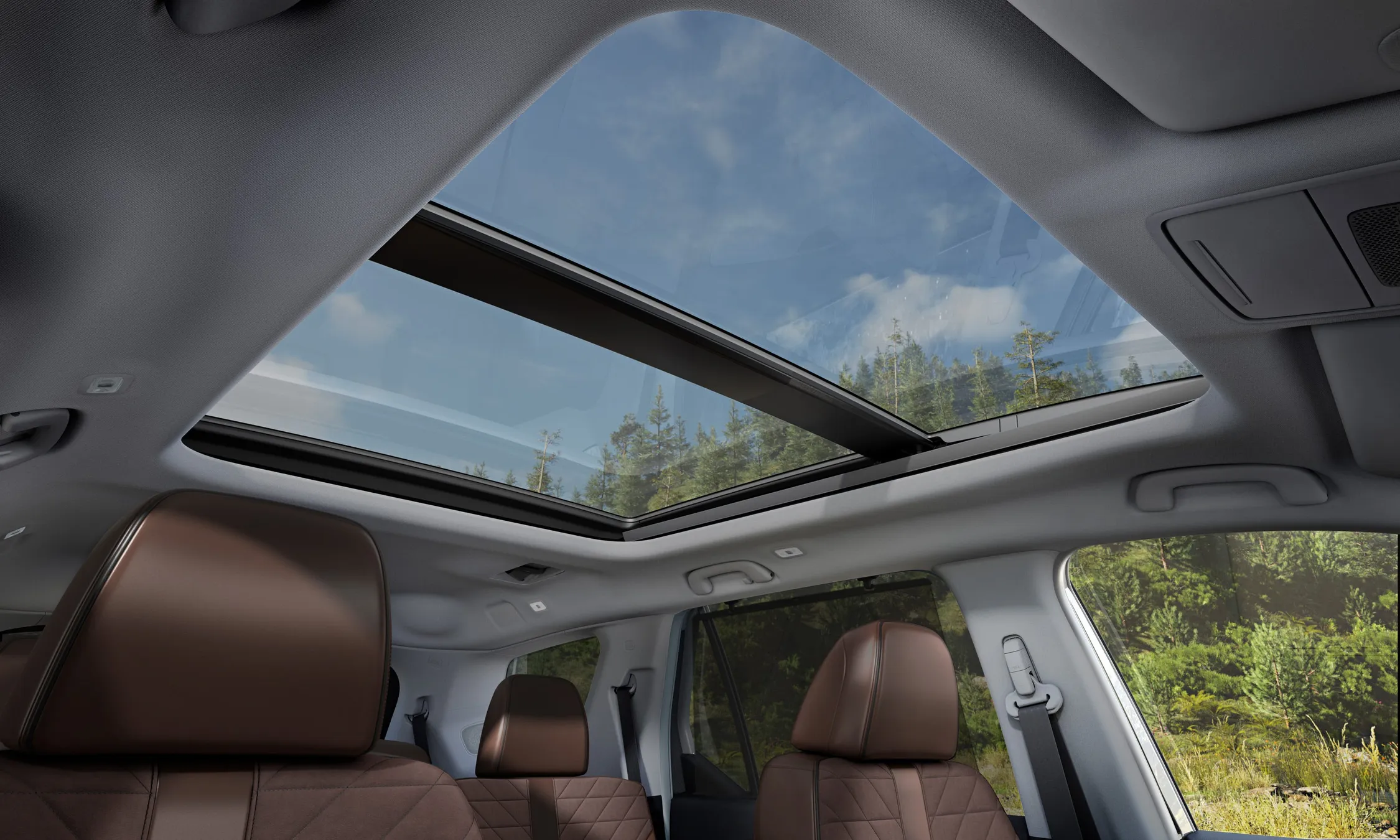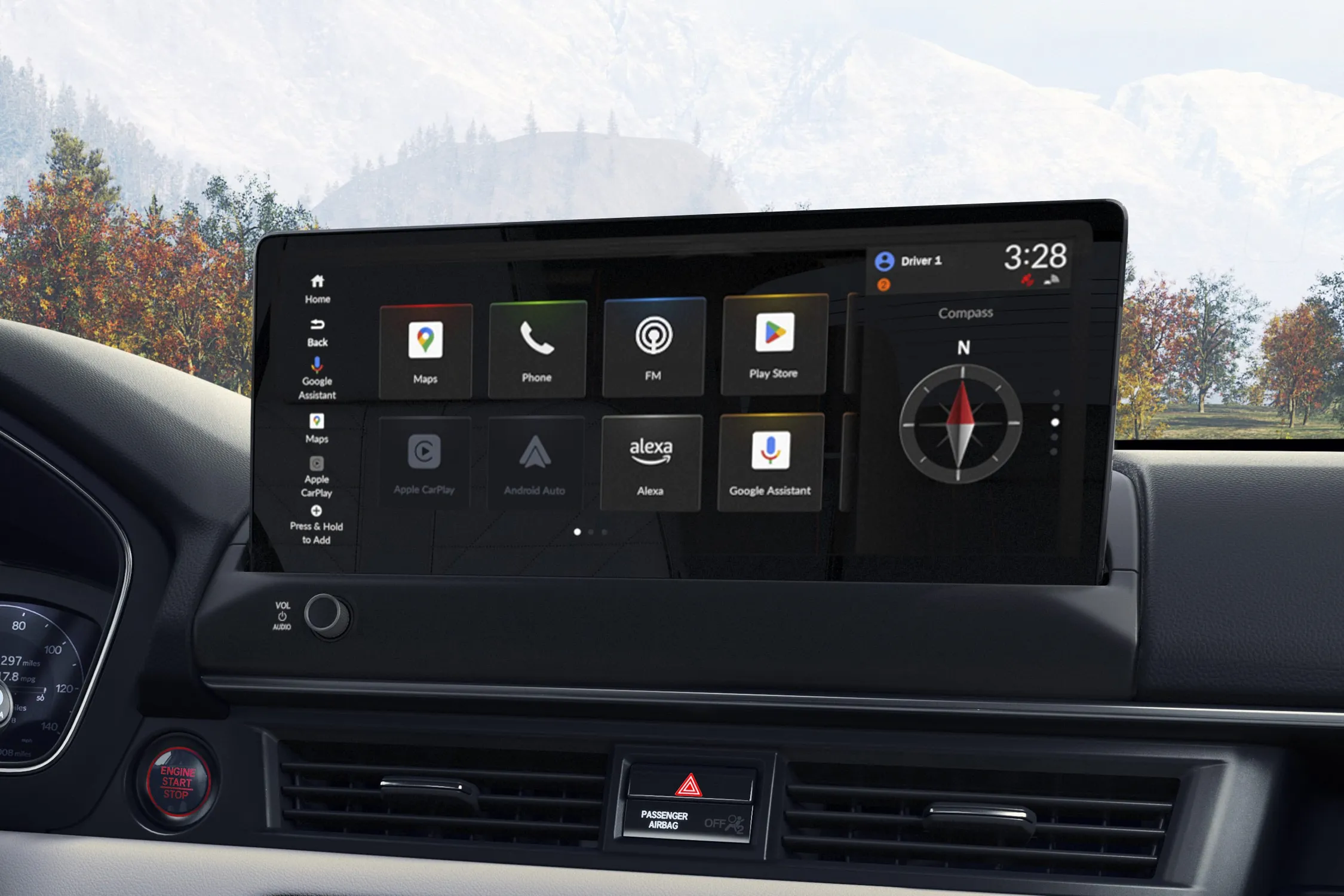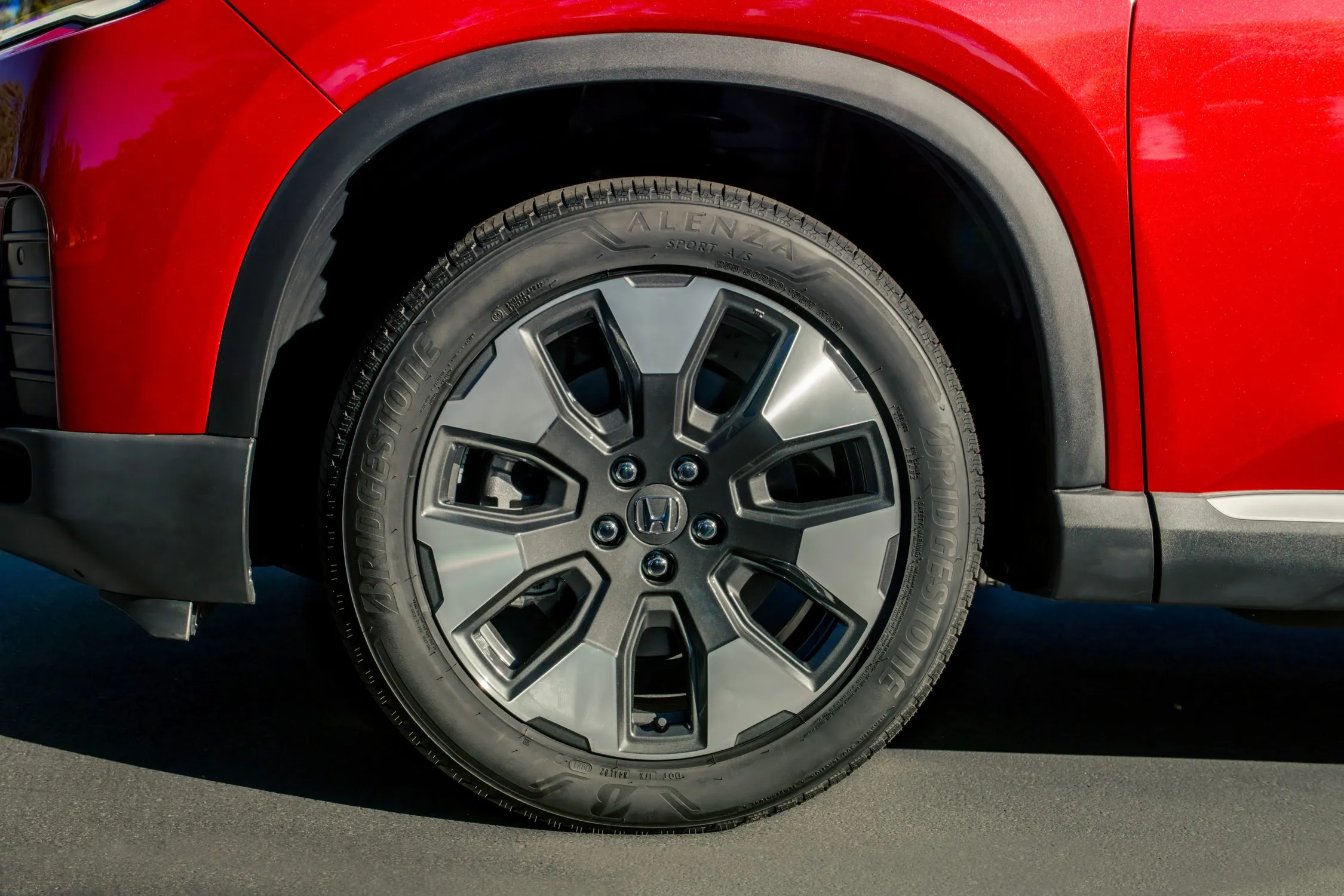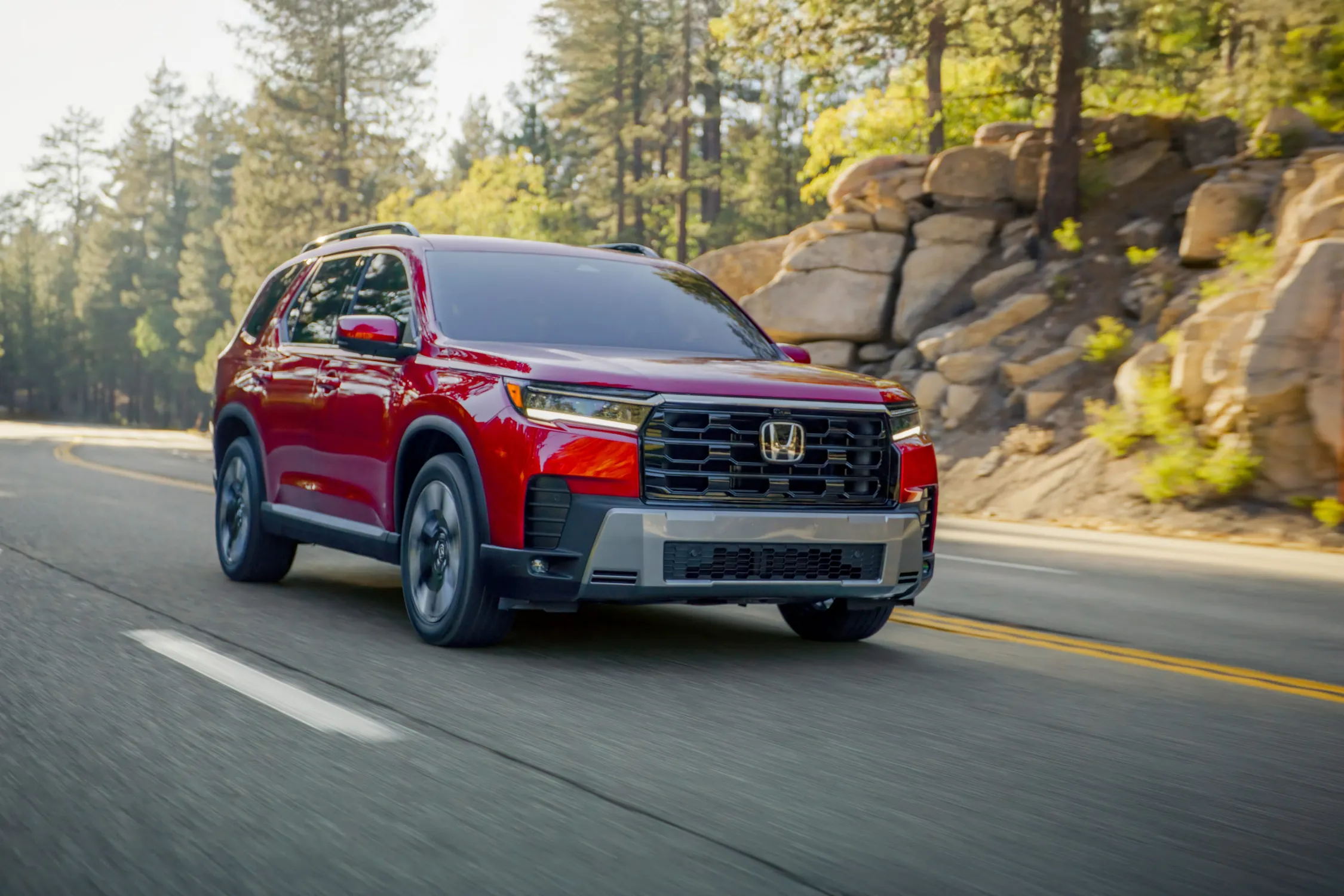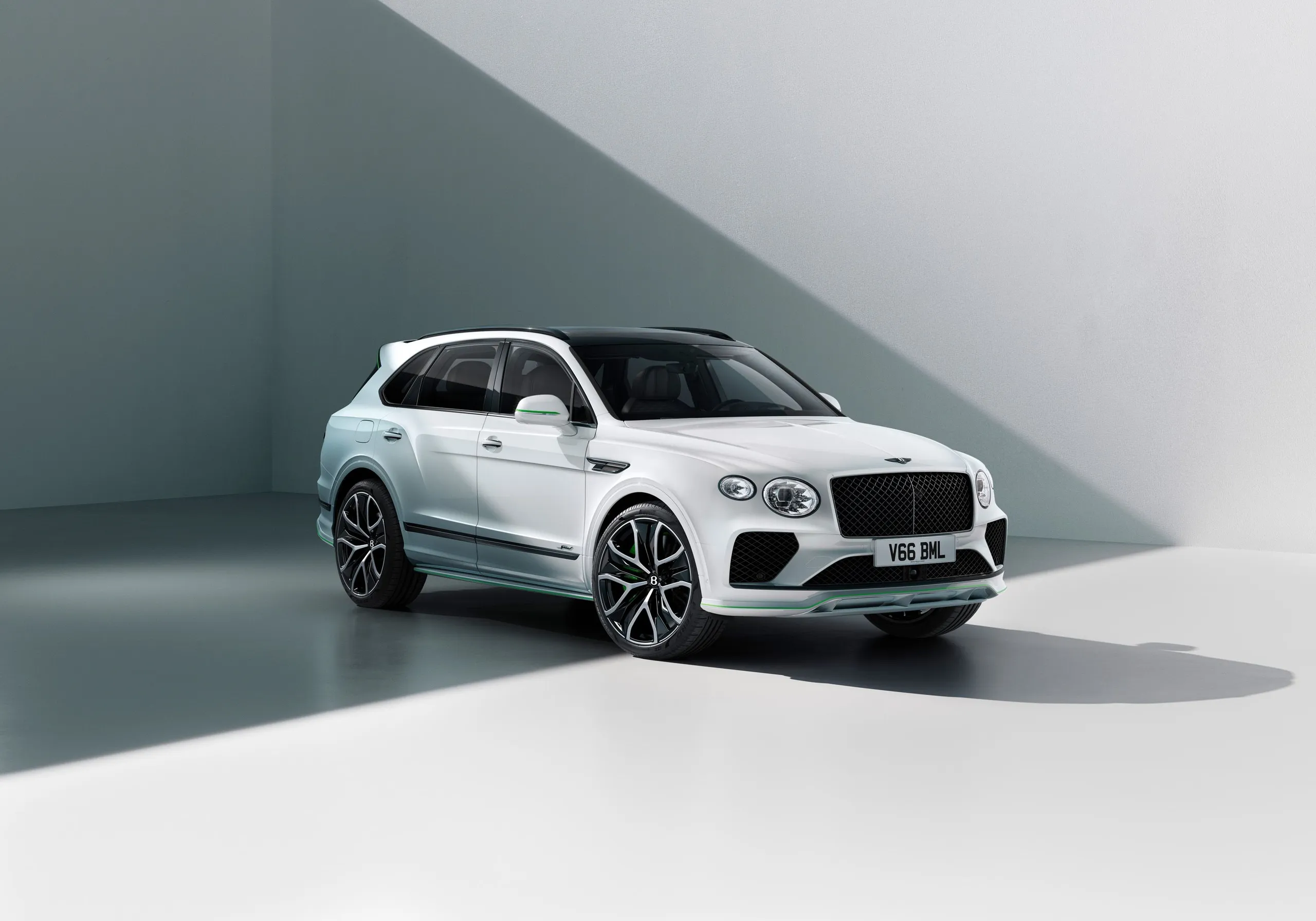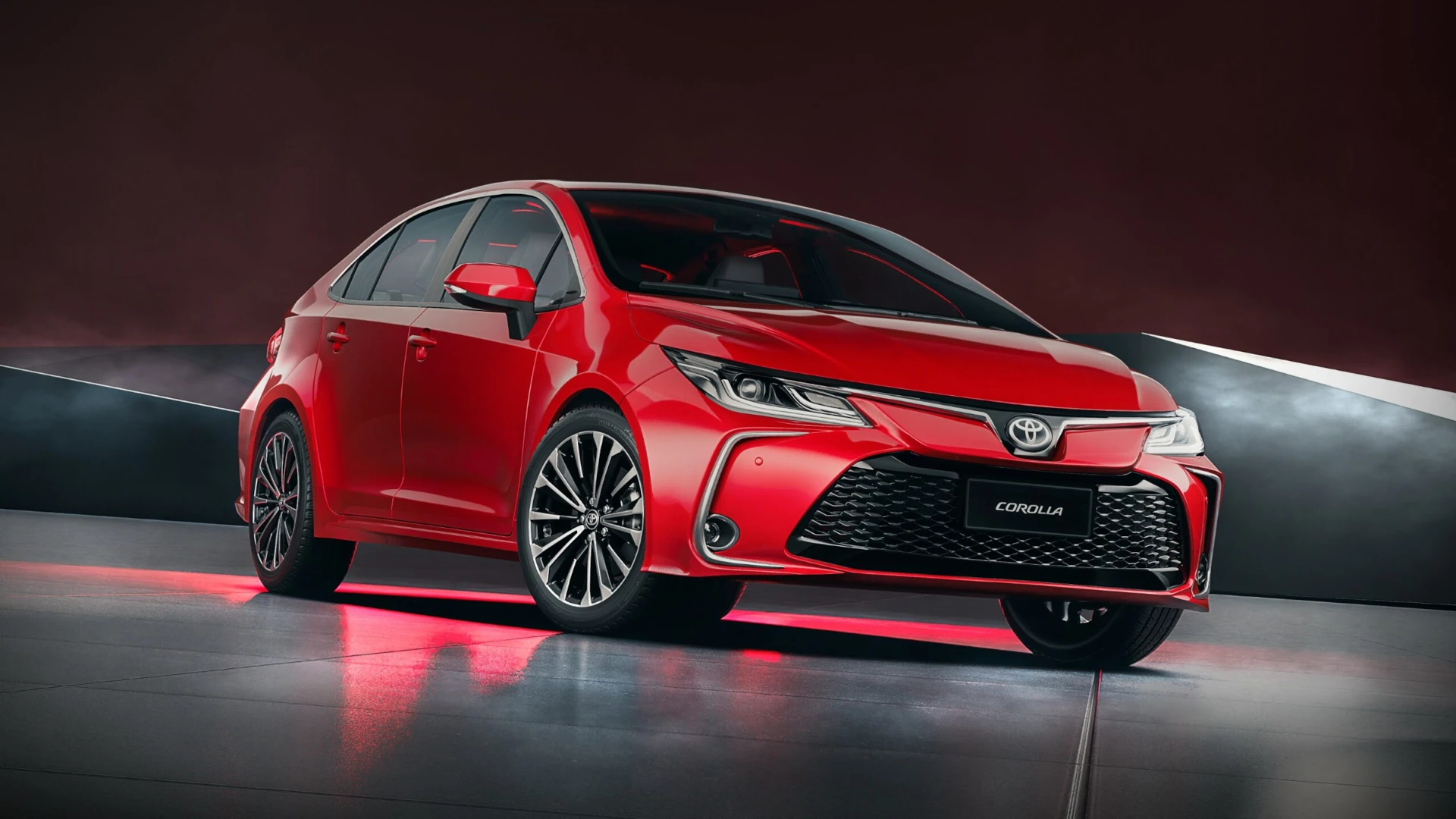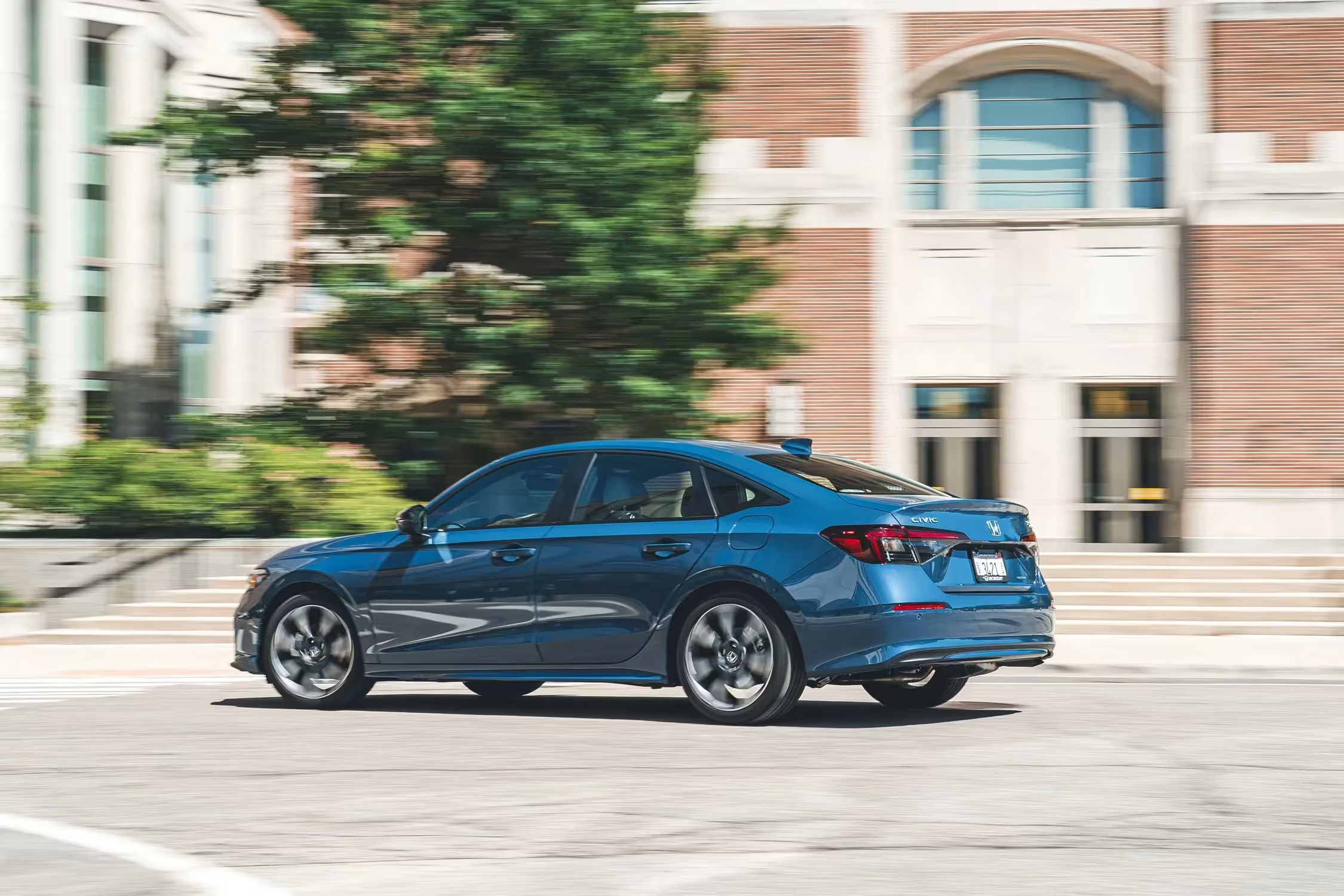Is it worth it? The PILOT 2026 bets on 285 HP and enhanced sound insulation. Compare the cost versus the efficiency of competing hybrids.

Get ready for a turnaround in the three-row SUV segment! The year 2026 is approaching, and with it, Honda will launch a mid-cycle update for its venerable Pilot that promises to change the game. The question on everyone’s mind is: will Honda’s bold move to democratize the most advanced technology be the masterstroke needed to outplay rivals, or will the persistent absence of a hybrid option leave the Pilot at the mercy of the competition?
The Technological Revolution in HONDA PILOT 2026: Giant Screens, Google Built-in, and a New Paradigm of Value
The HONDA PILOT 2026 is not just an update; it’s a declaration of intent. In a bold move to redefine what “standard” means in the competitive three-row SUV segment, Honda decided to equip even the base model, the Sport, with a technology arsenal that was previously exclusive to higher-end models. This is not merely an improvement; it’s a “democratization of high-value features” aimed at shaking up the competition.
Imagine entering the most basic model and encountering a 12.3-inch touch infotainment screen and a 10.2-inch digital instrument cluster. To put it in perspective, the 2025 Sport model came with a modest 7-inch central screen and an equally sized digital cluster. This transformation represents a quantum leap in user experience and positions the Pilot at parity, or even ahead, of many competitors from the entry level. The inclusion of Google Built-In, which integrates Google Maps, Google Assistant, and direct access to the Play Store within the vehicle, elevates connectivity to a new level, complemented by 5G Wi-Fi capability.
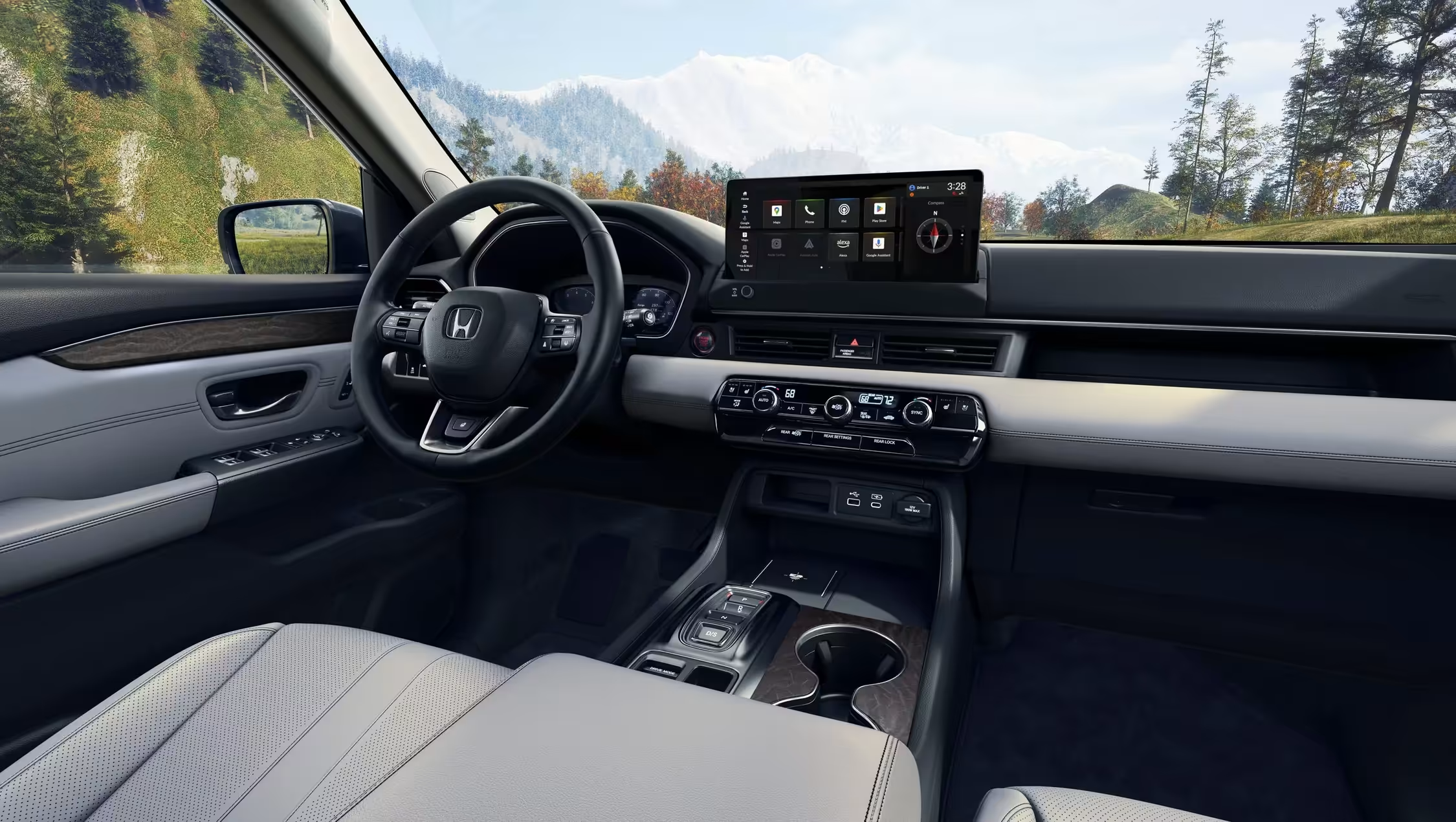
Redesigned Exterior and Improved Acoustic Comfort
But the revolution doesn’t stop at technology. The exterior design of the HONDA PILOT 2026 also received a strategic refresh. The front now features a more imposing and “boxier” grille, flanked by new front and rear skid plates that give the SUV a more rugged and adventurous look. It’s a visual language that conveys confidence and readiness for any family or road challenge.
Honda didn’t stop at aesthetics and technology. Criticisms regarding cabin noise levels in the 2025 model, especially when compared to rivals like the Kia Telluride, were taken seriously and addressed. The Pilot 2026 incorporates new soundproofing materials, semi-tempered door glass, and additional insulators in doors and the hood. The result? A measurable reduction of 2 to 3 decibels at key frequencies, translating into a significantly quieter and more refined driving experience. Top-tier versions, Touring and Elite, also receive thicker wheel well linings for maximum insulation.
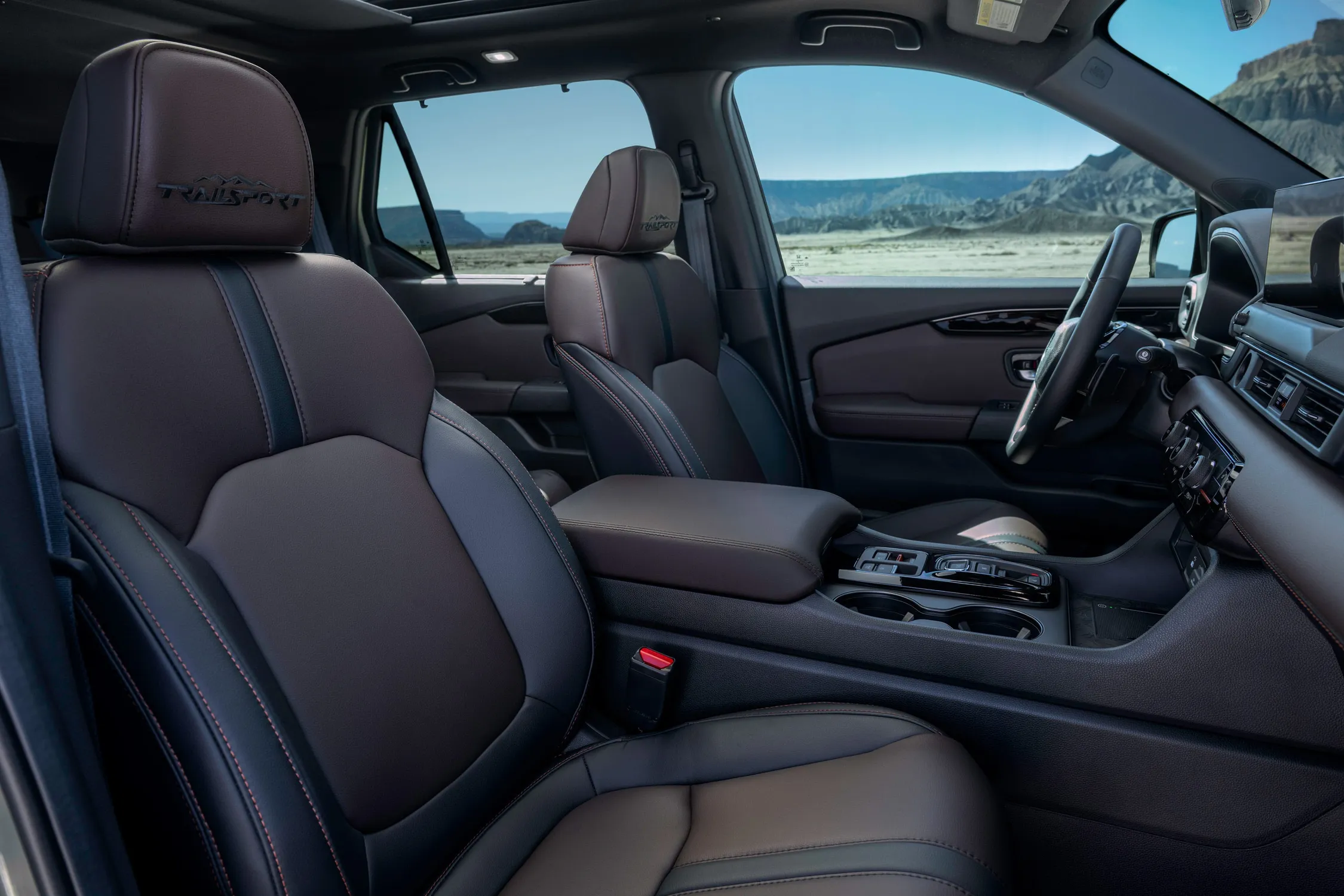
“Honda is not just updating the Pilot; it’s rewriting the manual on what a family SUV should offer as standard. The focus on technology from the ground up is a brilliant move to attract and retain customers.”
Another practical improvement that enhances the Pilot’s family appeal is the standardization of utility features across all trims. Now, starting from the Sport, the vehicle comes with a power tailgate and roof rails. Small details that make a big difference in everyday life. For those seeking a touch of exclusivity, the color palette has been expanded with Solar Silver Metallic, Smoke Blue Pearl, and the exclusive Ash Green Metallic for the TrailSport version.
V6 ‘Jurassic’ vs. The Hybrid Wave: The Big Dilemma of HONDA PILOT 2026
While the Pilot 2026’s interior screams “future,” the mechanical heart of the SUV murmurs “proven reliability.” Honda opted to keep the existing V6 powertrain, a decision that offers both security and strategic questions. In a world where electrification is advancing rapidly, the absence of a hybrid option is arguably the main vulnerability of the new Pilot.
Proven Power, Questionable Efficiency
The 3.5-liter V6 engine with direct injection and cylinder deactivation continues to deliver 285 horsepower and 262 lb-ft of torque, paired with a 10-speed automatic transmission. This combination is known for its smoothness and linear performance, providing a predictable and robust driving experience. The drivetrain options remain flexible: front-wheel drive (2WD) is standard on Sport, EX-L, and Touring, while the i-VTM4® torque-vectoring all-wheel-drive system is optional and standard on TrailSport, Elite, and Black Edition models. Towing capacity, a critical attribute for family SUVs, remains solid: 3,500 pounds for 2WD models and 5,000 pounds for AWD.
Despite its reliability, the fuel efficiency of the V6 lags behind current standards. Estimated at 22 MPG combined for the 2WD, the Pilot falls significantly behind hybrid rivals. For example, a Toyota Grand Highlander Hybrid can deliver an impressive 36 MPG combined. This difference results in a notably higher annual ownership cost for Pilot drivers, estimated between $800 and $1,200 more in fuel expenses.
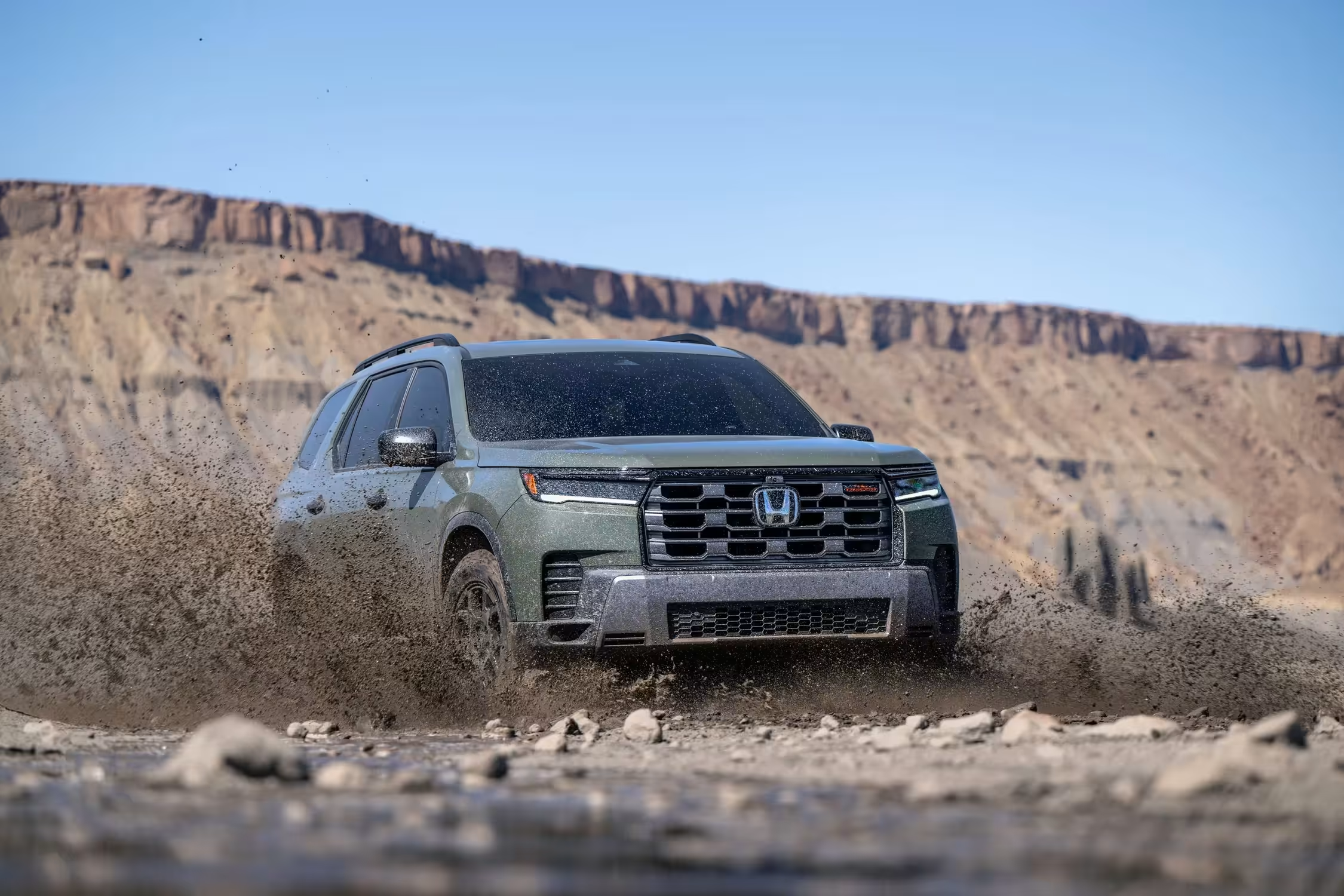
Is Honda risking too much by ignoring the growing demand for more efficient vehicles?
The market expects a hybrid Pilot no earlier than the 2027 model year, leaving an open window of opportunity for competitors. To learn more about the hybrid revolution and what rivals are doing, check out our analysis of the Nissan Rogue Plug-in Hybrid 2026.
Improvements in Driving Dynamics and Safety
Although the powertrain remains unchanged, Honda has not neglected the driving experience. Strategic investment went into recalibrating the electric power steering system to improve precision, tactile feel, and high-speed stability. Combined with the NVH improvements, the goal is to reinforce the Pilot’s premium perception through comfort and reliability.
In terms of safety, the HONDA PILOT 2026 emphasizes its commitment to family protection. The Honda Sensing® technology suite remains standard and has been upgraded, including a new post-collision braking system across the lineup, as well as forward cross-traffic alert and autonomous emergency braking with pedestrian detection. These advances are crucial for the safety and performance of modern brakes.
HONDA PILOT 2026 vs. The Giants: The Battle for 7-Seater SUVs
The three-row SUV segment is a fierce battleground, with formidable competitors like the Kia Telluride, Hyundai Palisade, Toyota Grand Highlander, and Mazda CX-90. The 2026 Pilot, with its strategic updates, enters the fight armed with new weapons.
| Vehicle | Standard Engine | Power (HP) | Standard Infotainment Screen | Hybrid Option Available |
|---|---|---|---|---|
| 2026 HONDA PILOT Sport | 3.5L V6 | 285 | 12.3 inches | No |
| Toyota Grand Highlander | 2.4L Turbo I4 | N/A | 12.3 inches | Yes |
| 2026 Kia Telluride | 3.8L V6 | N/A | TBD (large screen expected) | No |
| 2026 Hyundai Palisade | 3.8L V6 | N/A | TBD | Yes |
| 2025 Mazda CX-90 | 3.3L Turbo I6 | N/A | TBD | Yes |
Honda sets a new technological standard for entry-level models, which should pressure rivals like the Kia Telluride 2027 to respond in their upcoming cycles. However, the elephant in the room remains the absence of a hybrid. While the Grand Highlander offers multiple powertrain options, including high-efficiency hybrids, the Pilot remains committed to the V6.
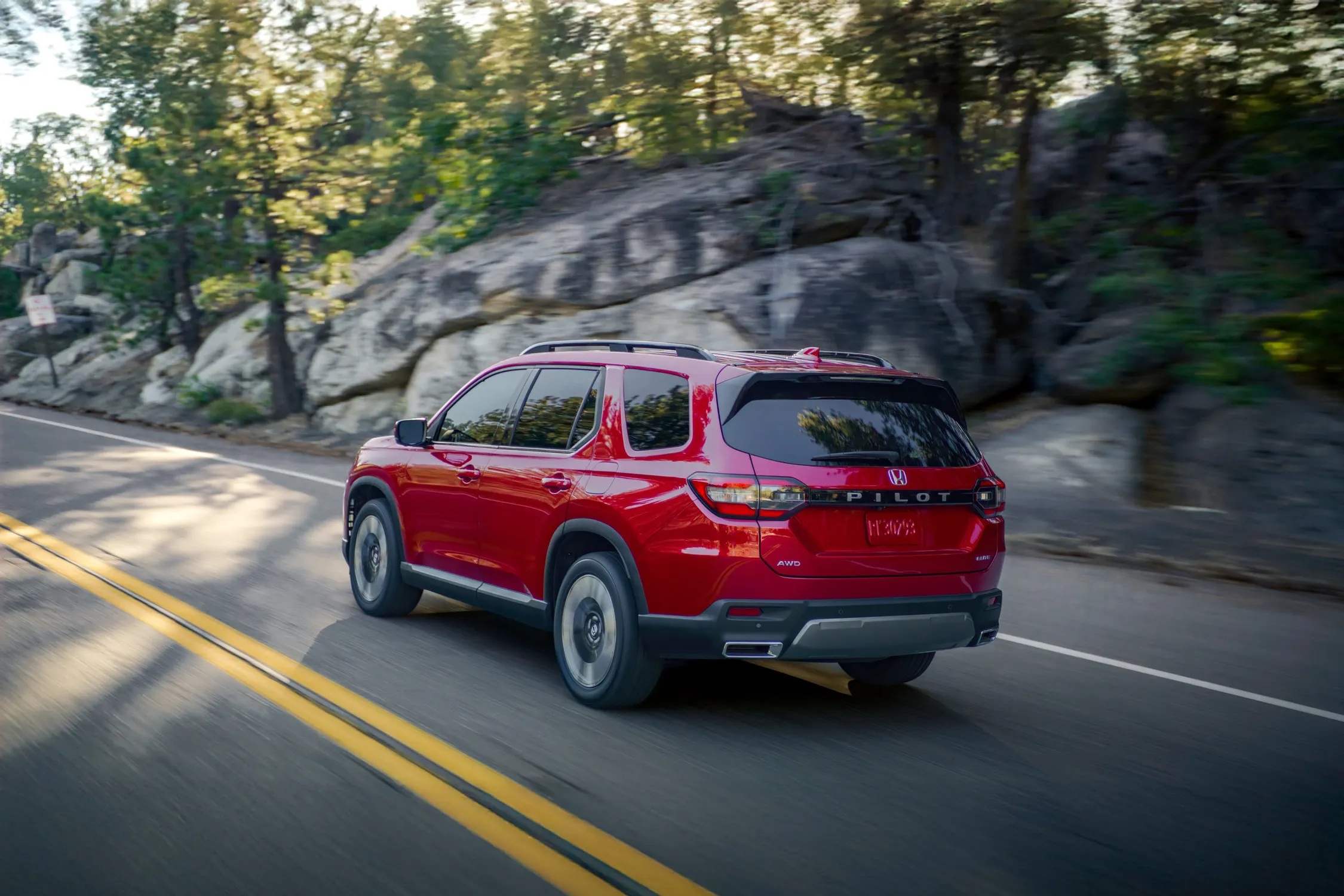
Strengths and Weaknesses in the Competitive Landscape
- Strengths:
- Enhanced Value: The democratization of technology and utility features, especially in the Sport version, offers an extremely attractive entry package.
- Proven Reliability: The V6 engine and platform are synonymous with durability and low maintenance, a major appeal for families.
- Space and Practicality: The spacious and versatile interior, with capacity for up to eight passengers and smart storage solutions, remains a differentiator.
- TrailSport Capabilities: For adventurers, the TrailSport version offers genuine moderate off-road capability.
- Weaknesses:
- Hybrid Gap: The lack of an electrified option is a critical disadvantage in a market rapidly moving towards efficiency and lower ownership costs.
- Braking Performance: Previous tests indicated longer stopping distances compared to some competitors.
- Interior Luxury: Although improved, the interior may not reach the same level of sophistication and materials as some rivals like the Hyundai Palisade or Mazda CX-90 in top trims.
The HONDA PILOT 2026 is scheduled to arrive at dealerships in December 2025, with a modest price increase that many will justify by the substantial addition of standard equipment. The starting price for the Sport 2WD model is expected to be around $42,000, making it a competitive option. To compare, it’s worth checking out the New NISSAN PATHFINDER 2026 and its innovations.
Honda’s strategy with the Pilot 2026 makes a clear bet: lead in standard technology and reinforce the image of reliability and practicality, even if it means ceding ground in electrification for a year or more. For families seeking a rugged, spacious SUV loaded with cutting-edge technology from the base trim onwards, the Pilot 2026 is an extremely strong choice. However, for those prioritizing fuel efficiency and lower long-term operational costs, waiting for an eventual hybrid version or considering an electrified competitor will be inevitable.
